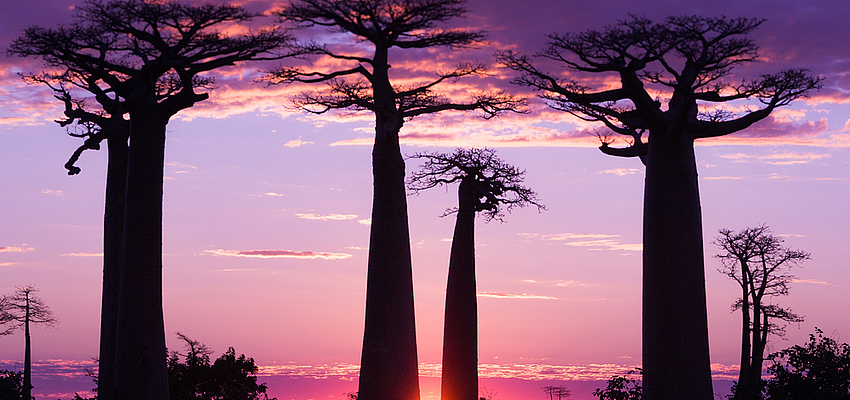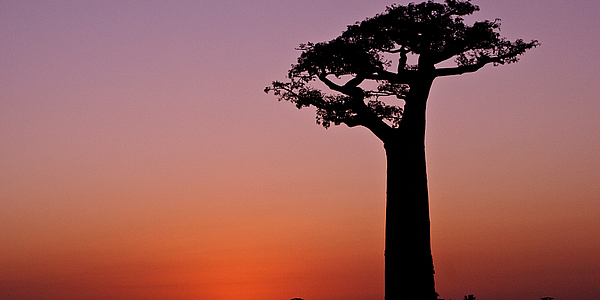


I'm always looking for emblematic species and when I found out, while I was staying in the north of the Red Island, that a huge number of baobabs had found a refuge in a little village near Diégo-Suarez, that's all it took to spark my curiosity and make me decide to head to this little hamlet.
Bounded by a river and huge trees of the brightest green, Ambilo is a small village that's typical of northern Madagascar spread out at the foot of the Montagne des Français. It comprises modest, but charming, wooden houses with thatched or metal roofs and depends mostly on growing crops and livestock farming. The zebus graze peacefully in the fields left to fallow under the benevolent eye of the herons which seem to be watching over them. The village is surrounded by rice paddy-fields and other crops, in particular near the river which flows nearby and provides unlimited quantities of water.
The thing that sets the village of Ambilo apart is a few hundred metres away. After a thirty minute walk across the fields and pastures I saw the object of my visit: the baobab hill.
It seems to float in the middle of the paddy fields, a little hill like an island of greenery with a huge number of the native baobabs or Adansonia suarezensis growing out of it. The image created by these baobabs scattered amongst this woodland is majestic. They stand high above the other trees and over the island, showing their crowns and strangely-shaped branches.
Another hill not far away, makes it possible to take some great photos of the scenery and get the whole island into the shot. Get your cameras out, photography buffs!

After wandering over and around the hill, we return to the village and head towards the river. Here, the scenery is completely different. The empty fields give way to huge trees with lovely, deep greeny-blue leaves that contrast with the bright blue of the sky. On the track, chameleons seem to be trying to compete with these colours by taking on almost fluorescent red and green hues.
Near the river, an old man is working his field with his many grandchildren playing around him. As soon as they see my camera, a competition to strike the most fantastic pose begins before me. Their delight at seeing their grimaces on the screen of the camera and their laughter follows us as we go on our way.
A group of village women are chatting and washing clothes on the bank. My guide explains that the river is inhabited by Nile crocodiles which, when fully grown, can reach up to 5 metres in length...Rather worrying when you have to stand in the water to do your washing...
While we wander around the village and the surrounding area, the guide tells me about the role of zebus in local farming, the customs and traditions of the region's inhabitants and the different crops grown by the people. This adventure allowed me to see one of the most beautiful baobab-filled landscapes in the country and find out more about the daily life of the people of a little village in northern Madagascar. Do come and see it with your own eyes!
The easiest way to get to Ambilo is to book with a tour operator, the track that leads to the village is rough and cannot be accessed by taxi. Recently, some tour operators have started offering mountain bike tours around the Montagne des Français, along the coast and near the village of Ambilo... try it, if you like active holidays.